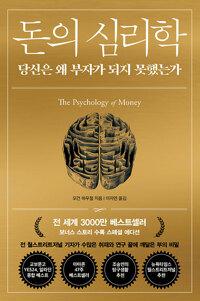책 이미지

책 정보
· 분류 : 외국도서 > 과학/수학/생태 > 과학 > 파동/파동역학
· ISBN : 9780470062012
· 쪽수 : 674쪽
목차
Preface.
Acknowledgement.
Symbols.
Abbreviations.
Part I Basic Digital Signal Processing.
1 Introduction.
1.1 Signals and Information.
1.2 Signal Processing Methods.
1.3 Applications of Digital Signal Processing.
1.4 Summary.
2 Fourier Analysis and Synthesis.
2.1 Introduction.
2.2 Fourier Series: Representation of Periodic Signals.
2.3 Fourier Transform: Representation of Nonperiodic Signals.
2.4 Discrete Fourier Transform.
2.5 Short-Time Fourier Transform.
2.6 Fast Fourier Transform (FFT).
2.7 2-D Discrete Fourier Transform (2-D DFT).
2.8 Discrete Cosine Transform (DCT).
2.9 Some Applications of the Fourier Transform.
2.10 Summary.
3 z-Transform.
3.1 Introduction.
3.2 Derivation of the z-Transform.
3.3 The z-Plane and the Unit Circle.
3.4 Properties of z-Transform.
3.5 z-Transfer Function, Poles (Resonance) and Zeros (Anti-resonance).
3.6 z-Transform of Analysis of Exponential Transient Signals.
3.7 Inverse z-Transform.
3.8 Summary.
4 Digital Filters.
4.1 Introduction.
4.2 Linear Time-Invariant Digital Filters.
4.3 Recursive and Non-Recursive Filters.
4.4 Filtering Operation: Sum of Vector Products, A Comparison of Convolution and Correlation.
4.5 Filter Structures: Direct, Cascade and Parallel Forms.
4.6 Linear Phase FIR Filters.
4.7 Design of Digital FIR Filter-banks.
4.8 Quadrature Mirror Sub-band Filters.
4.9 Design of Infinite Impulse Response (IIR) Filters by Pole–zero Placements.
4.10 Issues in the Design and Implementation of a Digital Filter.
4.11 Summary.
5 Sampling and Quantisation.
5.1 Introduction.
5.2 Sampling a Continuous-Time Signal.
5.3 Quantisation.
5.4 Sampling Rate Conversion: Interpolation and Decimation.
5.5 Summary.
Part II Model-Based Signal Processing.
6 Information Theory and Probability Models.
6.1 Introduction: Probability and Information Models.
6.2 Random Processes.
6.3 Probability Models of Random Signals.
6.4 Information Models.
6.5 Stationary and Non-Stationary Random Processes.
6.6 Statistics (Expected Values) of a Random Process.
6.7 Some Useful Practical Classes of Random Processes.
6.8 Transformation of a Random Process.
6.9 Search Engines: Citation Ranking.
6.10 Summary.
7 Bayesian Inference.
7.1 Bayesian Estimation Theory: Basic Definitions.
7.2 Bayesian Estimation.
7.3 Expectation Maximisation Method.
7.4 Cramer–Rao Bound on the Minimum Estimator Variance.
7.5 Design of Gaussian Mixture Models (GMM).
7.6 Bayesian Classification.
7.7 Modelling the Space of a Random Process.
7.8 Summary.
8 Least Square Error, Wiener–Kolmogorov Filters.
8.1 Least Square Error Estimation: Wiener–Kolmogorov Filter.
8.2 Block-Data Formulation of the Wiener Filter.
8.3 Interpretation of Wiener Filter as Projection in Vector Space.
8.4 Analysis of the Least Mean Square Error Signal.
8.5 Formulation of Wiener Filters in the Frequency Domain.
8.6 Some Applications of Wiener Filters.
8.7 Implementation of Wiener Filters.
8.8 Summary.
9 Adaptive Filters: Kalman, RLS, LMS.
9.1 Introduction.
9.2 State-Space Kalman Filters.
9.3 Sample Adaptive Filters.
9.4 Recursive Least Square (RLS) Adaptive Filters.
9.5 The Steepest-Descent Method.
9.6 LMS Filter.
9.7 Summary.
10 Linear Prediction Models.
10.1 Linear Prediction Coding.
10.2 Forward, Backward and Lattice Predictors.
10.3 Short-Term and Long-Term Predictors.
10.4 MAP Estimation of Predictor Coefficients.
10.5 Formant-Tracking LP Models.
10.6 Sub-Band Linear Prediction Model.
10.7 Signal Restoration Using Linear Prediction Models.
10.8 Summary.
11 Hidden Markov Models.
11.1 Statistical Models for Non-Stationary Processes.
11.2 Hidden Markov Models.
11.3 Training Hidden Markov Models.
11.4 Decoding Signals Using Hidden Markov Models.
11.5 HMM in DNA and Protein Sequences.
11.6 HMMs for Modelling Speech and Noise.
11.7 Summary.
12 Eigenvector Analysis, Principal Component Analysis and Independent Component Analysis.
12.1 Introduction – Linear Systems and Eigenanalysis.
12.2 Eigenvectors and Eigenvalues.
12.3 Principal Component Analysis (PCA).
12.4 Independent Component Analysis.
12.5 Summary.
Part III Applications of Digital Signal Processing to Speech, Music and Telecommunications.
13 Music Signal Processing and Auditory Perception.
13.1 Introduction.
13.2 Musical Notes, Intervals and Scales.
13.3 Musical Instruments.
13.4 Review of Basic Physics of Sounds.
13.5 Music Signal Features and Models.
13.6 Anatomy of the Ear and the Hearing Process.
13.7 Psychoacoustics of Hearing.
13.8 Music Coding (Compression).
13.9 High Quality Audio Coding: MPEG Audio Layer-3 (MP3).
13.10 Stereo Music Coding.
13.11 Summary.
14 Speech Processing.
14.1 Speech Communication.
14.2 Acoustic Theory of Speech: The Source–filter Model.
14.3 Speech Models and Features.
14.4 Linear Prediction Models of Speech.
14.5 Harmonic Plus Noise Model of Speech.
14.6 Fundamental Frequency (Pitch) Information.
14.7 Speech Coding.
14.8 Speech Recognition.
14.9 Summary.
15 Speech Enhancement.
15.1 Introduction.
15.2 Single-Input Speech Enhancement Methods.
15.3 Speech Bandwidth Extension – Spectral Extrapolation.
15.4 Interpolation of Lost Speech Segments – Packet Loss Concealment.
15.5 Multi-Input Speech Enhancement Methods.
15.6 Speech Distortion Measurements.
15.7 Summary.
16 Echo Cancellation.
16.1 Introduction: Acoustic and Hybrid Echo.
16.2 Telephone Line Hybrid Echo.
16.3 Hybrid (Telephone Line) Echo Suppression.
16.4 Adaptive Echo Cancellation.
16.5 Acoustic Echo.
16.6 Sub-Band Acoustic Echo Cancellation.
16.7 Echo Cancellation with Linear Prediction Pre-whitening.
16.8 Multi-Input Multi-Output Echo Cancellation.
16.9 Summary.
17 Channel Equalisation and Blind Deconvolution.
17.1 Introduction.
17.2 Blind Equalisation Using Channel Input Power Spectrum.
17.3 Equalisation Based on Linear Prediction Models.
17.4 Bayesian Blind Deconvolution and Equalisation.
17.5 Blind Equalisation for Digital Communication Channels.
17.6 Equalisation Based on Higher-Order Statistics.
17.7 Summary.
18 Signal Processing in Mobile Communication.
18.1 Introduction to Cellular Communication.
18.2 Communication Signal Processing in Mobile Systems.
18.3 Capacity, Noise, and Spectral Efficiency.
18.4 Multi-path and Fading in Mobile Communication.
18.5 Smart Antennas – Space–Time Signal Processing.
18.6 Summary.
Index.


















![[eBook Code] Multimedia Signal Processing (eBook Code, 1st)](/img_thumb/9780470066492.jpg)






